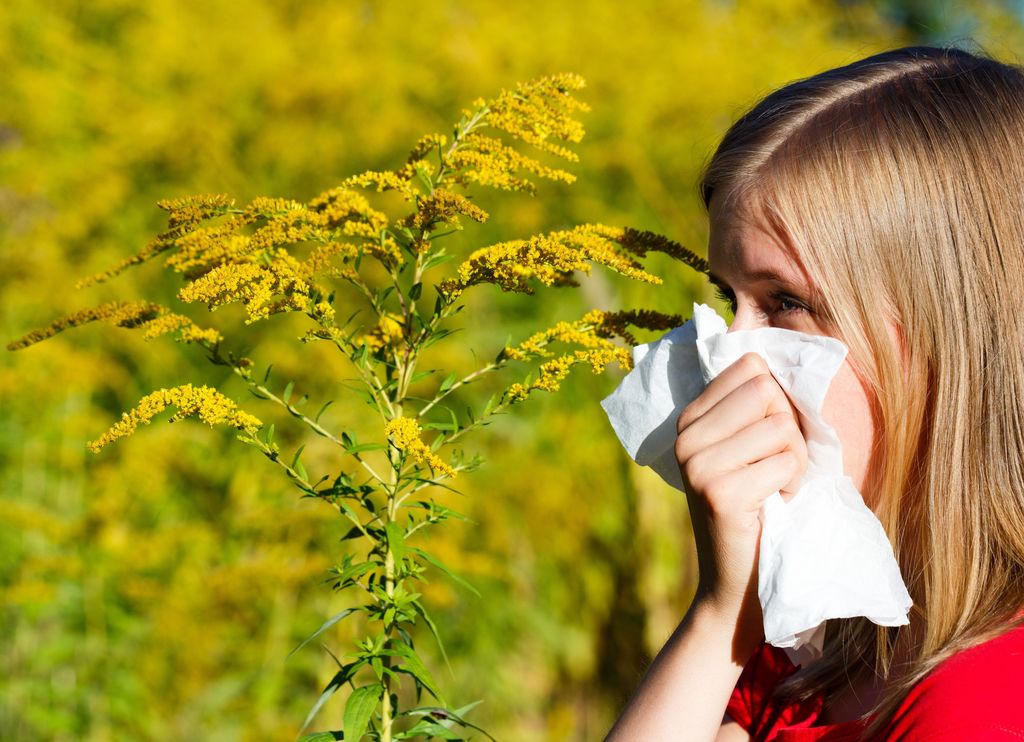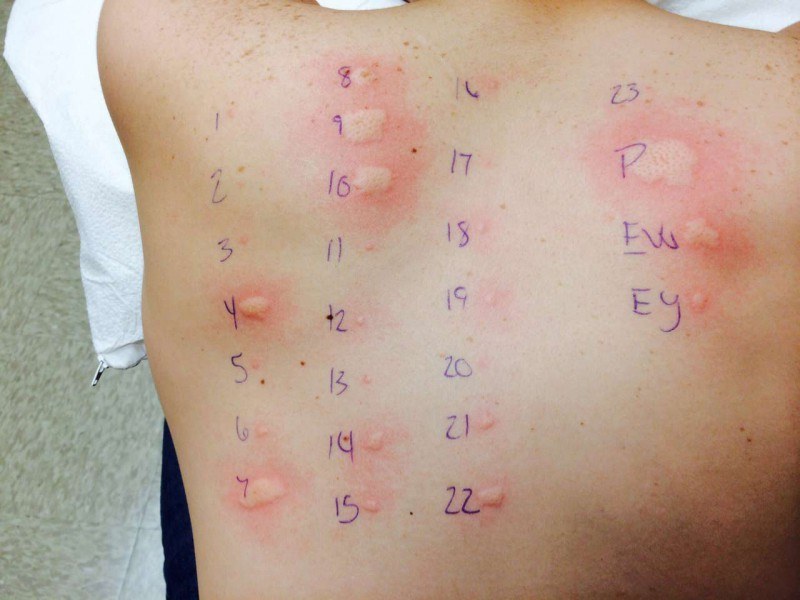3 Allergy Myths and Truths You Need to Know

Helping Seasonal Allergies with Natural Remedies and Nutrition (Part 2)
Much of what we believe about allergies are based on long-standing myths. These misconceptions cause us to seek the wrong solutions or expect too much from the one’s we do select.
Presented here are 5 myths with the real facts to help you to overcome common disinformation and misunderstandings.
Myth #1 – We Outgrow Allergies Over Time
“Don’t worry about it you will outgrow your allergy over time.” or so we are led to believe.
Facts, tell us that the difference between those over 66 is only a 3% reduction (11 vs 14% for younger adults and children). Richard F. Lockey, M.D., director of the allergy and immunology department at the University of South Florida College of Medicine says:
There’s a common perception that as you get older, allergies go away. There’s some truth to that. But as we see people staying healthy longer into old age, we still see people in their 80s having symptoms or developing new allergies.
Richard F. Lockey , M.D. – Director of Allergy Dept – U of S. Florida College of Medicine
The truth is: maybe and maybe not. Allergies arise when your immune system overreacts to the presence of “invaders” as we covered in part 1, such as pollen, mold, dust mites and even certain foods.
The histamines that are released to fight these invaders cause inflammation, excess mucus and itchiness in your eyes, ears and throat.
A stronger immune system will resist and overcome these assaults. That is likely why some get allergies and some don’t, even in the presence of the same levels of attackers.
That’s why natural adaptogenic products like Ashwaganda can help to strengthen your immune system to fight off the invaders without the allergic responses that cause the inflammatory uncomfortableness.
Myth #2: Food Sensitivities Are Food Allergies
There is a significant difference from a food sensitivity and a food allergy you should know about.
A food allergy is an immune-system reaction that can involve multiple organs and systems. It can sometimes be deadly serious. That is, rapid enough to cause anaphylaxis or a severe and possibly fatal reaction.

A food sensitivity is most often limited to your digestive system. While acute or even chronic and life quality disabling, it is at least not immediately life threatening like a food allergy
An estimated 15 million Americans—approximately 4 percent of children and 1 percent of adults—have a food allergy. Unfortunately, the numbers have been rising over the past two decades.
Nearly 20 percent of American adults claim they’re afflicted with a food allergy.
Yet just 10 percent actually have a food allergy and even fewer – 1 in 20 actually received a doctor’s diagnosis according to research published recently in the medical journal JAMA Network Open.
With a true food allergy, your body has made antibodies which can combat proteins and substances the body preceives as threats. A strong immune system is the key.
If every time you eat something, you get hives, swelling and maybe wheezing, chest or throat tightness, shortness of breath, GI symptoms, or dizziness, this could be an allergy.
If you suspect you have a food allergy or sensitivity, keep a food and symptom diary. Try dropping the food for 30 days and see what happens to the symptoms.
Keep in mind, as previously mentioned, sensitivities tend to have gastrointestinal discomfort such as queasiness and bloating, but not necessarily every time they consume a problem food.
Myth #3: Allergy Tests Are the Only Way to Identify Allergens
The actual facts are that not everyone with allergy symptoms needs testing to determine allergy causes. Test results are only part of the diagnostic sketch.
A medical history, physical exam, and discussion with your doctor or nutritional consultant about symptoms and lifestyle habits may also be needed.
Allergy tests may be warranted if you or your health professional aren’t able to pin down what’s causing your problem.

With skin testing, an allergist or immunologist applies tiny amounts of possible allergens to pricked skin or injects them under skin (intradermal testing). These tests while tolerable aren’t pleasant btw.
If you’re allergic to the potential allergen, your skin will redden, swell, and/or itch usually within 20 minutes. (For contact allergies, you might be asked to wear a patch containing a potential allergen for two days.)
Some research concludes that skin prick tests, typically done on a forearm or the back, can accurately identify the presence or absence of most allergens.
On the other hand, a study published in 2014 in the Annals of Allergy, Asthma & Immunology suggests that sun damage and thinning skin may blunt the reaction to allergens.
Alternately, your doctor may draw your blood and order a laboratory test to identify your allergens. Blood tests may be more likely to find allergies where there are none. But doctors sometimes prefer them for those who have a skin condition like eczema or use medication that can interfere with skin tests.
Skin and blood tests for food allergies appear to be incorrect about half the time, so it’s best to use them only for foods you already suspect are triggers for you or your child.
If you test positive for a food allergy, your allergist may follow up with an oral challenge. This is where you eat the food in increasing amounts (under medical supervision) to gauge your response.
It seems best not to rely solely on tests to determine food allergies. If you suspect an allergy, test as suggested above by abstaining from the food. Return to it judiciously and pay attention to the response you get.
Tests you may see advertised on the net which analyze your hair or your muscle response to allergens are not to be relied upon as they are not backed by quality research or evidence.
Avoidance Is a Good First Step
If you believe you have either allergies or even sensitivities, a logical first step is avoidance of the trigger.
The AAAAI (American Academy of Allergy, Asthma and Immunology) website has an allergen detection system that may help with pollen counts if that is your trigger.
Stay inside and use a good indoor air purifier during high pollen count periods.
Drevel Air Purifiers offer a 7-stage solution which acts as both an air purification system and humidifier which removes:
- Pollen
- Dust
- Dust Mites
- Bacteria
- Mold Spores
- Smoke
- Pet Dander and Odor
More on Air Purifiers in part 3 of this series.
For Mold Allergies
- Ventilate damp rooms
- Use mold removers to address the cause of the indoor symptom.
- Avoid leaf piles, perhaps compost piles as they ferment as well.
- Fix leaks or water sources which help develop mold. (This could include waterproofing your basement which could run into thousands but addresses cause directly.)
Conventional anti-histamines include Zyrtec, Allegra and Claritin which are available over-the-counter or online. They are less likely to cause drowsiness as older anti-histamines is the claim. Seniors may still experience drowsiness however.
Natural anti-histamines are also available if you prefer to avoid the drowsiness side effects and chemicals.
Conventional Treatment Options Come With Side Effects
For nasal congestion relief steroid nasal sprays such as over-the- counter and prescription products like fluticasone (Flonase, Flonase Allergy Relief, and generic) and triamcinolone (Nasacort, Nasacort Allergy 24HR Relief, and generic) can keep symptoms under control.
However, they can also cause nasal irritation including occasional nosebleeds. If that side effect occurs, it is best to stop using them.
For chronic and more troublesome symptoms, your allergist may recommend injection or daily under-the-tongue tablets (for dust mites, grass allergies and ragweed pollen) which contain small amounts of the causitive substance. However, both the shots and tablets can be costly.
In emergency cases of anaphylaxis, which is potentially fatal, to an allergin (bee sting, peanuts and other foods etc.) injectable epinephrine may be necessary. Adrenaclick and EpiPen should be on hand if you fall into that level of allergin risk.
In part 3 of this series, we will be looking further at summer seasonal allergies and additional natural allergy alternatives.
Read part 3 of this series
Read part 1 of this series – Spring Fever
Related Posts
Should You Take Drugs to Cure COVID-19?
Free Survival Nutrition Course – 8 Hours Plus PDF
Is Holistic Oral Care a Forgotten Part of Your Natural Health Treatment Plan?
What’s For Dessert? Superfood Fudge
8 Common Herbs With Amazing Health Benefits
Four, No-Cost, Natural Life Hacks for Creating a Healthier Emotional State
Wall Street Journal Investigation Finds Dumpster Trash Food and Supplements Being Sold as New
Tackling Obesity Begins with Awareness and Ends with Action


